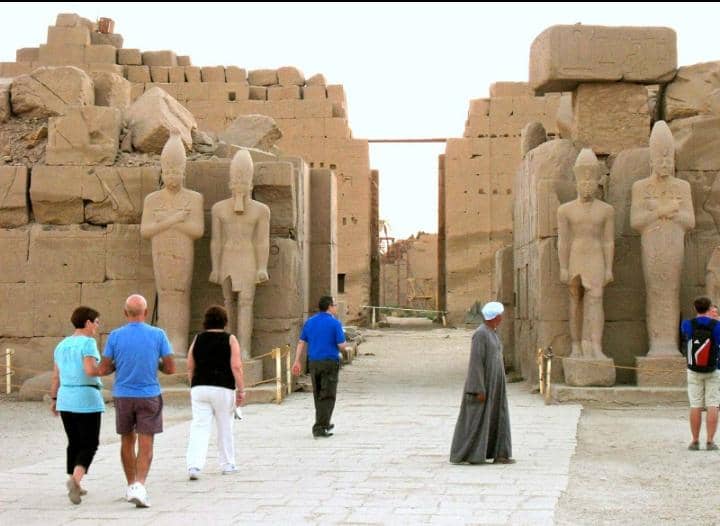The Karnak Temple Complex, located in Luxor, Egypt, is a breathtaking testament to the architectural and engineering prowess of ancient Egyptian civilization. This vast open-air museum, spanning over 2 square kilometers, is a must-visit destination for anyone interested in exploring the rich history and culture of Egypt.
The temple complex was built over a period of approximately 1,500 years, with construction beginning during the Middle Kingdom (c. 2000-1700 BCE) and continuing into the Ptolemaic Kingdom (305-30 BCE).
The earliest known monument at the site dates back to the reign of Senusret I (1971-1926 BCE) of the 12th Dynasty. Over the centuries, the complex was expanded and embellished by a succession of pharaohs, each adding their own unique contributions to this magnificent structure.
The name “Karnak” is derived from the nearby modern village of El-Karnak, which means “fortified village” in Arabic. However, the original name of the temple complex was “Ipet-isut,” meaning “The Most Selected of Places” in ancient Egyptian.
This name reflects the sacred significance of the site, which served as the main place of worship for the Theban Triad, with the god Amun as its head.
One of the most impressive features of the Karnak Temple Complex is the Great Hypostyle Hall, located within the Precinct of Amun-Re. This vast hall, measuring approximately 54,000 square feet (5,000 square meters), features 134 massive columns, some reaching a height of nearly 80 feet (24 meters). The hall was decorated by Seti I and Ramses II, who are credited with much of the construction.
Another unique aspect of the Karnak Temple Complex is the diversity of deities represented within its walls.
The complex includes temples dedicated to various gods and goddesses, ranging from some of the earliest worshipped in ancient Egypt to those that gained popularity much later in the culture’s history.
Despite the passage of time and the ravages of war and natural disasters, the Karnak Temple Complex remains a testament to the enduring spirit of ancient Egyptian civilization. Today, it is the second-most visited historical site in Egypt, attracting millions of visitors each year.
The complex is a UNESCO World Heritage site, recognized for its outstanding universal value and cultural significance.
In conclusion, the Karnak Temple Complex is a true marvel of ancient Egyptian architecture and engineering. Its vast size, intricate details, and rich history make it a must-see destination for anyone interested in exploring the wonders of this ancient civilization.
Whether you are a history buff, an architecture enthusiast, or simply someone who appreciates the beauty of the past, the Karnak Temple Complex is sure to leave a lasting impression.

